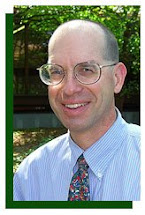 Driving into Jefferson City last week, I noticed the tremendous number of purple flowers along the roadside. There were so many flowers that hundreds of feet of the roadside appeared purple. I wondered about how many people saw the same color and had no idea what caused it.
Driving into Jefferson City last week, I noticed the tremendous number of purple flowers along the roadside. There were so many flowers that hundreds of feet of the roadside appeared purple. I wondered about how many people saw the same color and had no idea what caused it.The flowers are most likely a low-growing plant called henbit. Up close, it's an elegant flower. When I was learning about plants as an undergraduate, I had to make a collection of dried and pressed plants. Two of the plants had to be in the same scientific grouping called a genus.
I selected henbit and deadnettle, in the genus Lamium, the mint family of plants. I had never known what those plants were until I studied them. In the picture here, henbit is on the right and deadnettle is on the left.
Learning about plants, animals, and where they live in Missouri gives me knowledge of what is outside. Then, even with a little knowledge, I can begin to think about how fish, forests, and wildlife improve our quality of life in Missouri and how conservation tasks help each Missourian. You simply have to look and ask questions. What is that plant? What makes that color? There are easy sources on the Internet to find information, including the Department of Conservation Web pages on plants.
Learning more about plants helps us understand conservation much like in the Star Wars movie where Luke Skywalker is told by Obi-Wan that he has "taken a first step into a larger world."


